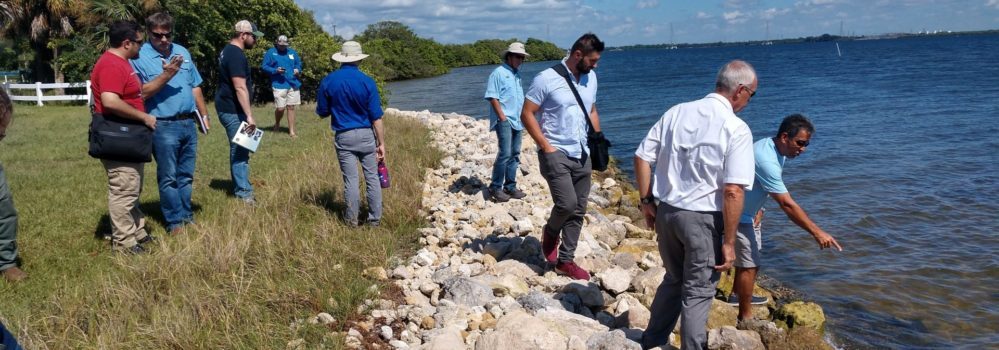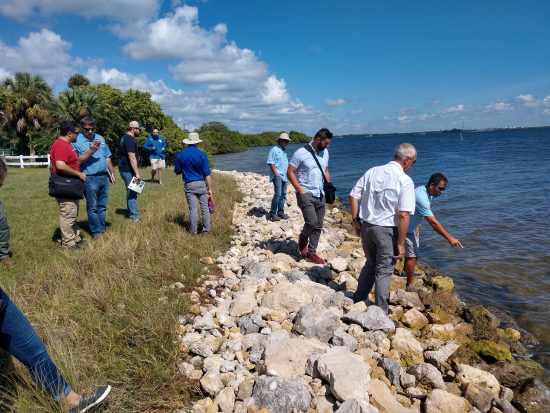
Developing courses for training marine contractors

There is growing demand in Florida and around the Southeast United States for effective, attractive, affordable, and environmentally conscious ways to stabilize shorelines. Living shorelines, a form of nature-based infrastructure, mimic natural coastal systems while protecting and enhancing the built environment. For example, large bags of oyster shells placed in rows in shallow water parallel to the shoreline are one type of living shoreline. This method of shoreline protection reduces the impact of waves, preventing erosion, while providing habitat for new living oysters and juvenile fish.
While property owners are increasingly interested in these types of structures, few marine contractors know how to design and construct living shorelines. In order to address this need, Fara Ilami, coordinator of the Florida Fish and Wildlife Conservation Commission’s Coastal Wildlife Conservation Initiative, set about to provide training. She established a working group of practitioners to develop a comprehensive course with a focus on local aspects of living shorelines. To gauge the interest and better understand the knowledge gaps, the working group conducted a survey at the Florida Marine Contractors Association 2017 Annual Expo. Based on those findings, the working group brought in skilled instructors and started designing the course materials.
The full pilot training course took place over two days in October 2019, with a classroom component and two site visits. By offering the course and giving continuing education credits (CEUs), the working group made the course accessible and relevant to working professionals. The course included modules on marketing living shorelines to property owners, feasibility, implementation, and maintenance. Field trips are an important component to the course, but finding appropriate sites nearby was difficult, so the working group will invest considerable effort into strategically selecting field trip sites as they expand the training into new regions.
The course evaluations were very positive, with a majority of participants indicating that they would add living shorelines to their suite of services as a result of the training. Overall, the results of the pilot course are promising for building a base of contractors who can install living shorelines, thus serving as a model for other states. Stay tuned for further developments in your area!
The summary above is part of the Living Shorelines Community of Practice webinar series. View this webinar online here. For more resources regarding living shorelines, please visit the Living Shorelines Academy.
Hilary Stevens is the coastal resilience manager for Restore America’s Estuaries.
